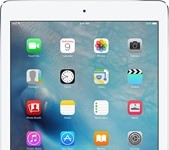In her recent essay Medische Geheimen (Medical Secrets), Karin Spaink critically explores the system of mandatory electronic medical records that has been proposed by the Dutch government.
One of the many requirements for a succesful introduction of electronic medical records (alongside such “biggies” as security, privacy and accuracy) is that “situational” knowledge provided by print is emulated by the electronic system:
Print has proven its usefulness and people have become adept at interpreting the physical hints it provides.
- One knows that new additions are at the front of the file;
- One can immediately see how large (and thus how complex) a dossier is;
- One can easily put two sheets side by side for a quick comparison;
- The handwriting or the letter head shows who added a note;
- The location of the file on the desk — left or right — shows if you have already dealt with a case.
(The last quoted sentence turned into a list by me; Spaink refers in a footnote at the end of that list to another book about electronic medical records, De Nacht Schreef Rood, The Night Wrote Red?)
I immediately had to think of Wikipedia (well, any wiki really), which can show you who created an entry, which can make a quick comparisson between two versions of a document, and where the latest additions to an article are at the top of its history, and the latest additions to the site are at the top of the Recent Changes page.
The requirement to get a feel for the size of a file also resonated with me; I very much like the progress bar that Weasel Reader provides me with.
Of course, size doesn’t always matter: reading the complexity of a case or the matureness of an encyclopedia article by its file size or history length is a heuristic that is bound to fail regularly.
Which hints that the physical qualities of print provide you with would you like to see emulated in ebooks?


































BTW, computers sometimes do provide their own situational knowledge. Many people I know prefix the names of important files with a character that precedes letters in a given character set, such as an exclamation mark, in order to influence the sort order of a list of files. (This way, “sticky” files float to the top, indicating that they are important.)
Any way you can sort files in a list belongs to this. The Apple Macintosh OS has had a feature for years now where you can display a filename with a coloured backgrounds.
Hey, Branko, I know just what you mean. For the most important site listed in my FTP program, the name is AAA teleread–to make certain it’s at the top. Many other people must use similar tricks. The more easily software can bend to our priorities, the better. Ideally it can happen without workarounds.